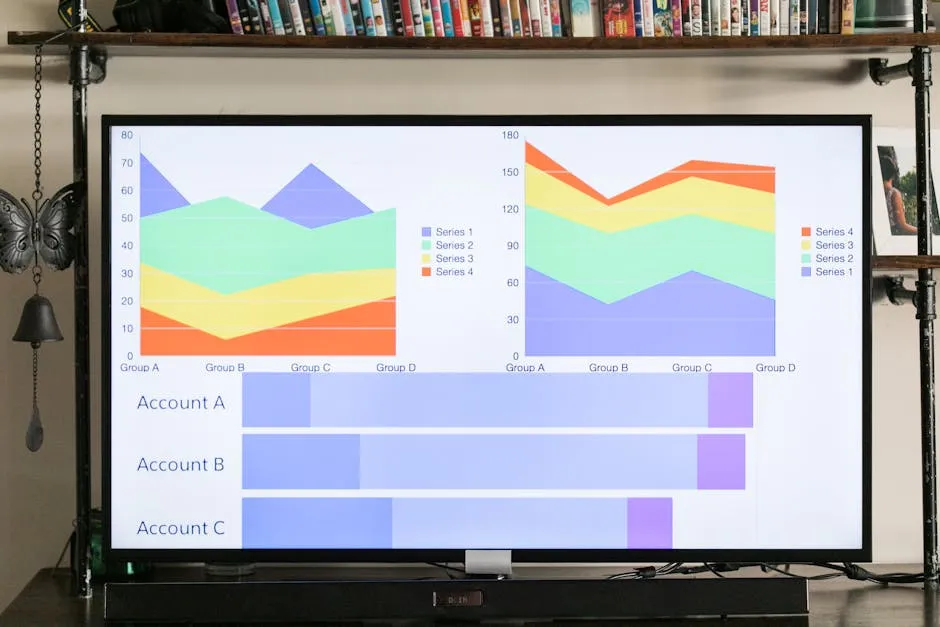Slayer Mode:
- Average Score: 1,200
- Average Kills: 15
- Average Time in Match: 8 minutes
Capture the Flag:
- Average Score: 1,800
- Average Kills: 10
- Average Time in Match: 12 minutes
Oddball:
- Average Score: 1,500
- Average Kills: 8
- Average Time in Match: 10 minutes
To visualize these statistics, consider a table that succinctly showcases the differences:
| Game Mode | Average Score | Average Kills | Average Time (mins) |
|---|---|---|---|
| Slayer | 1,200 | 15 | 8 |
| Capture the Flag | 1,800 | 10 | 12 |
| Oddball | 1,500 | 8 | 10 |
These statistics reveal interesting insights. In Slayer, players focus on kills, which is evident in the high average kill count. In contrast, CTF requires a balance of offense and defense, resulting in a higher score but fewer kills. Oddball shows a unique dynamic, where surviving with the ball is more crucial than racking up kills.

Understanding these statistics can greatly enhance gameplay. Players can adjust their strategies based on the mode they’re in. Are you going for glory in Slayer or strategizing in CTF? The numbers guide your approach. If you want to ensure you have the best visuals while you strategize, consider the ASUS ROG Strix 27″ Gaming Monitor. It’s perfect for those fast-paced moments!
Now that we’ve laid the foundation, let’s transition to the exciting realm of esports statistics and trends that showcase the competitive landscape of Halo. This data not only highlights top players but also reveals the evolution of the game in competitive settings. It’s time to gear up and dive into the world of Halo esports statistics!

4.2 Analysis of Recent Tournaments
The competitive landscape of Halo has become increasingly vibrant, especially with events like the Halo World Championship. This tournament not only highlights top-tier talent but also serves as a treasure trove of data for player and team statistics. In recent tournaments, we’ve seen some fascinating trends emerge.
For instance, Spacestation Gaming recently clinched victory at the Halo World Championship 2024, defeating OpTic Gaming 4-3 in the finals. This match showcased intense gameplay, where individual player statistics played a crucial role. Magico, a standout player, consistently topped the leaderboards with an impressive K/D ratio, showcasing his lethal prowess. Such performances not only bolster personal stats but also significantly impact team dynamics.
Analyzing tournament performance data reveals key takeaways. Players who excelled often displayed higher damage per match and accuracy stats. This correlation emphasizes the importance of precise shooting and damage output in high-stakes matches. Furthermore, teams that prioritized communication and strategic plays tended to outperform their opponents. Their stats reflected a balanced approach, with players contributing not just kills but also assists and objective plays.
Another interesting trend is the rise of younger players making their mark. Recent tournaments have seen a surge in younger talent, proving that age is not a barrier to excellence. The statistics underscore this shift, as these players often match or exceed the performance of seasoned veterans. This evolution hints at a promising future for Halo esports, where fresh talent brings new strategies and creativity to the table. To keep up with the latest in gaming, you might consider a Game Informer Magazine Subscription. Stay informed about the latest trends and strategies!

In summary, recent tournaments have provided rich statistics that illuminate player performance and team strategies. As the competitive scene evolves, the implications of these stats will continue to shape training and gameplay tactics for aspiring Halo champions.
4.3 Future Trends
Looking ahead, we can anticipate several trends in Halo statistics that could reshape the competitive landscape. As data collection methods become more sophisticated, we can expect an influx of detailed metrics that go beyond traditional K/D ratios. Advanced analytics will allow players to analyze performance in real-time, leading to more strategic gameplay.
One key trend is the integration of artificial intelligence in statistical analysis. AI can process vast amounts of data quickly, identifying patterns that human analysis might overlook. This technology will enable players and teams to tailor their strategies based on comprehensive data insights. Imagine AI-driven tools suggesting optimal loadouts or tactics based on an opponent’s historical performance! This predictive capability could revolutionize how players approach matches.
Moreover, the emphasis on mental performance metrics is likely to grow. As players become aware of the psychological aspects of gaming, tracking stats like focus duration and stress levels will gain importance. Understanding how mental states affect gameplay could lead to better preparation and performance.
Lastly, the rise of community-driven data sharing platforms will enhance competition. Gamers will increasingly collaborate, comparing stats and strategies to improve collectively. The sharing of insights will help level the playing field, empowering aspiring players to learn from the best. And if you’re looking to enhance your gaming setup, consider adding some LED Strip Lights for Gaming Setup. They not only look cool but can also enhance your gaming atmosphere!

In conclusion, the future of Halo statistics looks bright. With AI integration and a strong focus on mental performance, players will have the tools to refine their skills. As we embrace these trends, the competitive environment will only grow more exciting.
5.2 Analyzing Weaknesses
Analyzing your Halo statistics is essential for identifying weaknesses. Players often overlook this crucial step, but it can make or break your gameplay. Start by reviewing your K/D ratio. A low ratio may indicate poor shooting or positioning. Are you always the first to respawn? Maybe you need to reassess your approach.
Next, check your accuracy. If your shots are missing the mark, it’s time to practice your aim. Try using aim training tools or adjusting your sensitivity settings. Remember, even the best players started somewhere! Consider investing in a HyperX Cloud II Gaming Headset for clear audio feedback while you practice!
Look at your win rate, too. If you’re losing more than you’re winning, consider your game mode choices. Some players excel in Slayer, while others shine in Capture the Flag. Mix it up!
Lastly, study your gameplay footage. Watching how you play can reveal bad habits. Maybe you rush into fights without backup or ignore objectives. Spotting these patterns is half the battle.

Set specific, actionable goals based on your findings. Want to improve your K/D ratio? Aim for a 1.2 over the next five matches. This focused approach will keep you motivated and help you track your progress.
Analyzing your gameplay statistics can uncover areas for improvement. emerging trends in statistical analysis of identically distributed data
5.3 Setting Goals
Setting realistic goals is vital for continuous improvement in Halo. Start by reflecting on your statistical analysis. If your accuracy is low, make it your mission to increase it by 10% in the next month. Write this down!
Consider breaking down larger goals into smaller, manageable milestones. For instance, if you want to boost your K/D ratio, aim for an increase of 0.2 each week. Celebrate these small victories; they’ll keep you motivated!
Keep your goals adaptable. The Halo landscape changes with updates and new strategies. Stay flexible and adjust your objectives as needed.
Join a community or find a buddy to hold you accountable. Sharing your goals can provide support and encouragement. Plus, it’s more fun to improve with friends!

Continuous improvement is a journey, not a sprint. Embrace the process, learn from your mistakes, and watch your stats soar! And don’t forget to keep your gaming gear organized with a Desk Organizer for Gaming Accessories. It helps keep your space tidy and your mind focused!
FAQs
1. What statistics are most important for competitive play in Halo?
Key statistics for competitive play include K/D ratio, win rate, and accuracy. The K/D ratio reflects your combat effectiveness. A higher win rate indicates your success in securing victories. Accuracy measures your shooting proficiency, crucial for landing shots.
2. How can I access my Halo statistics?
You can access your Halo statistics through platforms like Halo Waypoint and Halo Tracker. These resources provide detailed breakdowns of your gameplay and performance metrics over time.
3. Can I compare my stats with professional players?
Yes! Tools like Halo Tracker allow you to compare your statistics with those of professional players. This comparison can highlight areas for improvement and provide inspiration for your gameplay.
4. How do game mode statistics differ?
Game mode statistics vary widely. For instance, Slayer matches typically show higher kill counts, while Capture the Flag may feature more assists. Each mode requires different strategies, and understanding these differences can enhance your gameplay.
5. What should I do if my stats are below average?
If your stats are below average, start by analyzing your gameplay. Identify specific weaknesses and set personal improvement goals. Practice regularly, seek feedback, and consider playing with more skilled teammates to learn from their strategies.
Please let us know what you think about our content by leaving a comment down below!
Thank you for reading till here 🙂
All images from Pexels
Introduction
Statistics play a vital role in gaming, especially in competitive settings like Halo. They help players gauge their performance, analyze strategies, and improve skills. In the fast-paced world of Halo, having access to accurate gameplay data is crucial.
This article aims to provide an engaging exploration of Halo statistics. We’ll cover various gameplay metrics, player performance data, and how to utilize this information for personal improvement. Whether you’re a casual gamer or an aspiring pro, understanding these stats can significantly enhance your gameplay.
Halo has evolved tremendously over the years. From its initial release in 2001 to the latest version, Halo Infinite (Xbox Series X), the series has continually integrated statistics into the gaming experience. Players now have access to a plethora of data that can be used to analyze their performance in real-time. This evolution reflects a broader trend in gaming where players are increasingly relying on data to gain a competitive edge.
Statistics aren’t just numbers; they are insights into what works and what doesn’t in gameplay. By understanding Halo statistics, players can identify strengths, uncover weaknesses, and build strategies that lead to victory. Buckle up as we dive into the world of Halo statistics!

1. Overview of Halo Statistics
1.1 What Are Halo Statistics?
Halo statistics encompass a wide range of data points that illustrate player performance and game dynamics. These include player metrics such as K/D (kills/deaths) ratio, win rates, damage dealt, and much more. Additionally, game mode statistics provide insights into how players perform across various settings, like Slayer or Capture the Flag.
These statistics are essential for players, teams, and analysts. For individual players, they offer a window into performance trends, revealing areas for improvement. Teams can use this data to devise strategies that exploit opponents’ weaknesses. Analysts, on the other hand, rely on these metrics to assess player potential and predict outcomes in competitive matches.
Statistics can be the difference between a mediocre player and a top-tier competitor. By understanding the numbers behind the game, players can refine their skills and achieve better results. If you’re serious about improving your gameplay, consider investing in a Xbox Wireless Controller. It’s ergonomic, responsive, and designed for precision gaming, ensuring you can put those stats to good use!

1.2 Sources of Halo Statistics
Several popular platforms provide access to Halo statistics. Halo Tracker, Halo Waypoint, and Liquipedia are among the most reputable sources. These platforms aggregate data from numerous matches, offering insights into individual player performance and overall game trends.
Halo Tracker is particularly useful for tracking individual stats over time, while Halo Waypoint serves as a hub for official game statistics and leaderboards. Liquipedia is invaluable for competitive scene insights, showcasing tournament results and player rankings.
When using these sources, it’s crucial to ensure their credibility and accuracy. Reputable platforms employ extensive data collection methods, ensuring the statistics they provide are reliable. This accuracy is paramount for players seeking to analyze their gameplay effectively. By leveraging these resources, players can access comprehensive data that enhances their understanding of Halo gameplay. And speaking of reliable gear, consider a SteelSeries Arctis 7 Wireless Gaming Headset for immersive sound while you strategize!

Understanding the significance of statistics can lead to better gameplay strategies. predicting future trends using central statistical organization data
2. Key Player Statistics
2.1 Common Metrics
Understanding player performance in Halo requires familiarizing yourself with essential metrics. These numbers provide insight into how well players perform in matches. Key metrics include K/D ratio, win rate, damage per match, and accuracy.
K/D Ratio is the ratio of kills to deaths. It shows how many opponents a player eliminates before being taken down themselves. A K/D ratio above 1.0 indicates a player is more lethal than they are vulnerable.
Win Rate measures the percentage of matches a player wins. It’s calculated by dividing the number of wins by the total number of matches played. A higher win rate signifies a player’s effectiveness in securing victories for their team.
Damage Per Match indicates the average amount of damage a player inflicts during a game. This metric reveals how active a player is in combat situations. It’s calculated by dividing the total damage dealt by the number of matches played. If you’re looking to enhance your gameplay experience, consider the Razer DeathAdder V2 Gaming Mouse. It’s designed for precision and comfort, making it the perfect companion for those intense matches!
Accuracy measures how many shots hit the target compared to the total shots fired. It demonstrates a player’s shooting proficiency. A higher accuracy percentage shows that a player is skilled at landing their shots, which can significantly impact match outcomes.
These metrics together create a comprehensive picture of a player’s performance. They help identify strengths and weaknesses, enabling players to focus on areas needing improvement and to further develop their skills.

2.2 Breakdown of Player Roles
In Halo, players typically adopt specific roles: Slayer, Support, and Objective players. Each role has unique responsibilities and associated statistics.
Slayer players focus on eliminating opponents. Their statistics usually showcase high K/D ratios and damage per match. For example, pro player Magico has a K/D ratio of 2.93 in Slayer matches, accompanied by an impressive win rate of 75%. This indicates they excel at both killing foes and contributing to team victories.
Support players aid their teammates by providing backup and strategic advantages. Their statistics may not always reflect a high K/D ratio but often highlight significant damage dealt and win rates. A top support player might show a K/D ratio of 1.2 but boast an accuracy of 60%. This player’s role is crucial in keeping teammates alive and ensuring objectives are met. To enhance your support game, consider the HyperX Alloy FPS Pro Mechanical Gaming Keyboard. Its responsive keys will keep you in the game!
Objective players prioritize completing mission goals, such as capturing flags or securing zones. Their statistics often feature lower K/D ratios but higher win rates. For instance, a notable objective player might have a K/D ratio of 0.8 but a win rate of 80%. This demonstrates their effectiveness in achieving game objectives over outright kills.
Understanding these roles and their statistics allows players to find their niche in the game. It also aids in forming balanced teams, ensuring each member contributes effectively.

2.3 Player Comparisons
Comparing statistics is essential for personal growth in Halo. Players can assess their performance against top performers to identify areas needing improvement.
Several platforms, like Halo Tracker and Halo Waypoint, provide tools to facilitate these comparisons. Players can input their Gamertags to view their statistics alongside those of professional players. This data can reveal how one’s K/D ratio stacks up against elite players or where accuracy may fall short.
Additionally, these platforms allow players to track their progress over time. By analyzing trends in their statistics, players can pinpoint patterns, such as improving win rates or increasing damage per match. This ongoing analysis can inform training strategies and gameplay adjustments. And if you want to take your streaming to the next level, check out the Elgato Game Capture HD60 S. It’s perfect for capturing your epic gameplay moments!
In conclusion, understanding key metrics, recognizing different player roles, and utilizing comparison tools are vital for any Halo player aiming to enhance their performance. By leveraging this knowledge, players can refine their skills and become more competitive in the game.

3. Game Mode Statistics
3.1 Overview of Game Modes
Welcome to the glorious battleground of Halo, home to various game modes that keep players on their toes. Whether you’re a lone wolf or a team player, these modes provide unique mechanics and challenges. Let’s break down some fan favorites.
Slayer is the classic deathmatch mode. Here, the objective is simple: rack up kills before the timer runs out. Players often rely on their K/D ratios to gauge performance in Slayer matches. Statistics in this mode can reveal a lot about player aggression and effectiveness in combat. If you’re serious about your performance, you might want to grab a Astro Gaming A40 TR Headset. It delivers crystal-clear sound, essential for hearing those sneaky opponents!
Then we have Capture the Flag (CTF), where teamwork and strategy reign supreme. Players must cooperate to capture the enemy’s flag while defending their own. Stats in CTF often show a higher average time in matches, highlighting the strategic nature of gameplay. The average score can offer insights into how teams communicate and execute plans.
Oddball is another thrilling mode, requiring players to hold onto a ball for points while fending off opponents. Here, the statistics tell a story of survival and tactical play. Players often need to adapt their strategies based on who’s holding the ball and for how long.
Each game mode has its own set of statistics that shine a light on player strategies and team dynamics. For example, Slayer matches might display higher average kills, while CTF matches could show a greater number of assists as players work together. Understanding these statistics helps players refine their strategies and improve performance in each mode.

3.2 Statistics by Game Mode
Let’s dive into the nitty-gritty of each game mode’s statistics. Numbers really do tell a story, and here we have some juicy data to chew on!
Slayer Mode:
- Average Score: 1,200
- Average Kills: 15
- Average Time in Match: 8 minutes
Capture the Flag:
- Average Score: 1,800
- Average Kills: 10
- Average Time in Match: 12 minutes
Oddball:
- Average Score: 1,500
- Average Kills: 8
- Average Time in Match: 10 minutes
To visualize these statistics, consider a table that succinctly showcases the differences:
| Game Mode | Average Score | Average Kills | Average Time (mins) |
|---|---|---|---|
| Slayer | 1,200 | 15 | 8 |
| Capture the Flag | 1,800 | 10 | 12 |
| Oddball | 1,500 | 8 | 10 |
These statistics reveal interesting insights. In Slayer, players focus on kills, which is evident in the high average kill count. In contrast, CTF requires a balance of offense and defense, resulting in a higher score but fewer kills. Oddball shows a unique dynamic, where surviving with the ball is more crucial than racking up kills.

Understanding these statistics can greatly enhance gameplay. Players can adjust their strategies based on the mode they’re in. Are you going for glory in Slayer or strategizing in CTF? The numbers guide your approach. If you want to ensure you have the best visuals while you strategize, consider the ASUS ROG Strix 27″ Gaming Monitor. It’s perfect for those fast-paced moments!
Now that we’ve laid the foundation, let’s transition to the exciting realm of esports statistics and trends that showcase the competitive landscape of Halo. This data not only highlights top players but also reveals the evolution of the game in competitive settings. It’s time to gear up and dive into the world of Halo esports statistics!

4.2 Analysis of Recent Tournaments
The competitive landscape of Halo has become increasingly vibrant, especially with events like the Halo World Championship. This tournament not only highlights top-tier talent but also serves as a treasure trove of data for player and team statistics. In recent tournaments, we’ve seen some fascinating trends emerge.
For instance, Spacestation Gaming recently clinched victory at the Halo World Championship 2024, defeating OpTic Gaming 4-3 in the finals. This match showcased intense gameplay, where individual player statistics played a crucial role. Magico, a standout player, consistently topped the leaderboards with an impressive K/D ratio, showcasing his lethal prowess. Such performances not only bolster personal stats but also significantly impact team dynamics.
Analyzing tournament performance data reveals key takeaways. Players who excelled often displayed higher damage per match and accuracy stats. This correlation emphasizes the importance of precise shooting and damage output in high-stakes matches. Furthermore, teams that prioritized communication and strategic plays tended to outperform their opponents. Their stats reflected a balanced approach, with players contributing not just kills but also assists and objective plays.
Another interesting trend is the rise of younger players making their mark. Recent tournaments have seen a surge in younger talent, proving that age is not a barrier to excellence. The statistics underscore this shift, as these players often match or exceed the performance of seasoned veterans. This evolution hints at a promising future for Halo esports, where fresh talent brings new strategies and creativity to the table. To keep up with the latest in gaming, you might consider a Game Informer Magazine Subscription. Stay informed about the latest trends and strategies!

In summary, recent tournaments have provided rich statistics that illuminate player performance and team strategies. As the competitive scene evolves, the implications of these stats will continue to shape training and gameplay tactics for aspiring Halo champions.
4.3 Future Trends
Looking ahead, we can anticipate several trends in Halo statistics that could reshape the competitive landscape. As data collection methods become more sophisticated, we can expect an influx of detailed metrics that go beyond traditional K/D ratios. Advanced analytics will allow players to analyze performance in real-time, leading to more strategic gameplay.
One key trend is the integration of artificial intelligence in statistical analysis. AI can process vast amounts of data quickly, identifying patterns that human analysis might overlook. This technology will enable players and teams to tailor their strategies based on comprehensive data insights. Imagine AI-driven tools suggesting optimal loadouts or tactics based on an opponent’s historical performance! This predictive capability could revolutionize how players approach matches.
Moreover, the emphasis on mental performance metrics is likely to grow. As players become aware of the psychological aspects of gaming, tracking stats like focus duration and stress levels will gain importance. Understanding how mental states affect gameplay could lead to better preparation and performance.
Lastly, the rise of community-driven data sharing platforms will enhance competition. Gamers will increasingly collaborate, comparing stats and strategies to improve collectively. The sharing of insights will help level the playing field, empowering aspiring players to learn from the best. And if you’re looking to enhance your gaming setup, consider adding some LED Strip Lights for Gaming Setup. They not only look cool but can also enhance your gaming atmosphere!

In conclusion, the future of Halo statistics looks bright. With AI integration and a strong focus on mental performance, players will have the tools to refine their skills. As we embrace these trends, the competitive environment will only grow more exciting.
5.2 Analyzing Weaknesses
Analyzing your Halo statistics is essential for identifying weaknesses. Players often overlook this crucial step, but it can make or break your gameplay. Start by reviewing your K/D ratio. A low ratio may indicate poor shooting or positioning. Are you always the first to respawn? Maybe you need to reassess your approach.
Next, check your accuracy. If your shots are missing the mark, it’s time to practice your aim. Try using aim training tools or adjusting your sensitivity settings. Remember, even the best players started somewhere! Consider investing in a HyperX Cloud II Gaming Headset for clear audio feedback while you practice!
Look at your win rate, too. If you’re losing more than you’re winning, consider your game mode choices. Some players excel in Slayer, while others shine in Capture the Flag. Mix it up!
Lastly, study your gameplay footage. Watching how you play can reveal bad habits. Maybe you rush into fights without backup or ignore objectives. Spotting these patterns is half the battle.

Set specific, actionable goals based on your findings. Want to improve your K/D ratio? Aim for a 1.2 over the next five matches. This focused approach will keep you motivated and help you track your progress.
Analyzing your gameplay statistics can uncover areas for improvement. emerging trends in statistical analysis of identically distributed data
5.3 Setting Goals
Setting realistic goals is vital for continuous improvement in Halo. Start by reflecting on your statistical analysis. If your accuracy is low, make it your mission to increase it by 10% in the next month. Write this down!
Consider breaking down larger goals into smaller, manageable milestones. For instance, if you want to boost your K/D ratio, aim for an increase of 0.2 each week. Celebrate these small victories; they’ll keep you motivated!
Keep your goals adaptable. The Halo landscape changes with updates and new strategies. Stay flexible and adjust your objectives as needed.
Join a community or find a buddy to hold you accountable. Sharing your goals can provide support and encouragement. Plus, it’s more fun to improve with friends!

Continuous improvement is a journey, not a sprint. Embrace the process, learn from your mistakes, and watch your stats soar! And don’t forget to keep your gaming gear organized with a Desk Organizer for Gaming Accessories. It helps keep your space tidy and your mind focused!
FAQs
1. What statistics are most important for competitive play in Halo?
Key statistics for competitive play include K/D ratio, win rate, and accuracy. The K/D ratio reflects your combat effectiveness. A higher win rate indicates your success in securing victories. Accuracy measures your shooting proficiency, crucial for landing shots.
2. How can I access my Halo statistics?
You can access your Halo statistics through platforms like Halo Waypoint and Halo Tracker. These resources provide detailed breakdowns of your gameplay and performance metrics over time.
3. Can I compare my stats with professional players?
Yes! Tools like Halo Tracker allow you to compare your statistics with those of professional players. This comparison can highlight areas for improvement and provide inspiration for your gameplay.
4. How do game mode statistics differ?
Game mode statistics vary widely. For instance, Slayer matches typically show higher kill counts, while Capture the Flag may feature more assists. Each mode requires different strategies, and understanding these differences can enhance your gameplay.
5. What should I do if my stats are below average?
If your stats are below average, start by analyzing your gameplay. Identify specific weaknesses and set personal improvement goals. Practice regularly, seek feedback, and consider playing with more skilled teammates to learn from their strategies.
Please let us know what you think about our content by leaving a comment down below!
Thank you for reading till here 🙂
All images from Pexels




